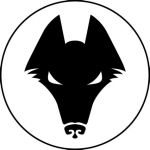Not a member of Pastebin yet?
Sign Up,
it unlocks many cool features!
- For centuries before the arrival of the first Aldmeri colonists to Cyrodiil, the highlands between Abecea and the northern mountains were already home to a thriving web of tribal communities. The people of the Highlands belonged to many different tribes, some more related to each other than others; generally, some sort of continuum existed in the region, connecting it to Abecea on one side and the lands of the Torellians, as well as Reachmen and the Kreathmen on the other. Among the Highland peoples was a relatively minor tribe of Cuhls; a tribe like any other, save for a particular hidden quality that would lead them to greatness unknown to the highlanders before then.
- Originating in the appropriately-called Cuhli Valley – at least if oral traditions are to be believed; some have claimed that the name was merely a later invention – the Cuhls established themselves as an important regional player through a combination of conquest, acquisition of land through marriage and voluntary unification among those tribes who recognised that it was better to accept new masters rather than to be brought before them on their knees. Growing out from their homeland, they spread across the highlands in all directions until all of the upland territory that would become known as the Colovian Highlands was under their control. The Cuhls were first and foremost warriors and raiders; old Abecean texts write of raiding parties descending upon the fertile Gold Coast on an annual basis, sometimes reaching as far as the coast. It is no wonder, then, that when Duke Varen decreed for a system of defensive fortifications to be erected in the hills around Kvatch, the foundation was already sitting in position, waiting for the labourers to bring back the wall that had defended the Gold Coast so many centuries prior.
- The Great Forest, a vast jungle stretching in a ring around the deforested Heartland breadbasket, acts as a boundary between two worlds. A frontier exists between Colovia and the Heartlands where the land has changed hands so many times that the people may as well be considered the quintessential Cyrodiilians, combining the cultures of the West and the East in a peculiar concoction. Past the lowland jungle of the Heartlands, however, the land swiftly shifts to one characterised by the many hills that dot the rugged countryside.
- It was during the period of Colovian expansion out of the highlands that Chorrol would rise as one of the foremost Colovian powers. Originally established as a frontier outpost by the warlord Maranax, Chorrol quickly grew into a proper hillfort. Maranax' holding initially consisted of his warriors and their families, as well as the native people who welcomed the newcomers as their protectors. Because of its location at the edge of the Heartland jungle, the settlement also became home to many Colovians who realised the eastern wetlands were not for them, as well as many Heartlanders who were brought back as slaves.
- Like the wealthy cities of southern Colovia, Chorrol too was greatly influenced by its native population that inhabited the area long before Colovian arrival. The city's most well-known symbol is the Great Oak, a tree of immense size sitting in the city's center. Considered holy by the old believers and a patriotic symbol by most locals, the oak is said to have already towered over the area when the first men had arrived to the region. Its size and the powers that allegedly emanate from it convinced those people to turn to worshipping it. Abandoning nomadic life, they settled down on the plateau surrounding the tree, building their dwellings in a circle around the holy oak. To this day, the Oak is venerated and a local holiday in honour of the tree is celebrated every Rain's Hand, when the tree is blooming.
- The importance of the Great Oak is also expressed in the name of the city itself - the literal translation of Chorrol stands for "Hill-Oak" in the local dialect of Colovian, a form of southern Torellian with heavy influences from the tongues of Colovia proper.
Add Comment
Please, Sign In to add comment

